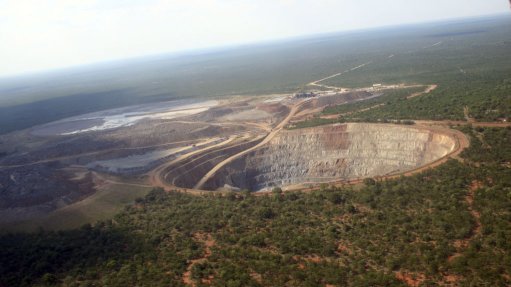Failed Riversands dams not registered, licensed
The Department of Water and Sanitation (DWS) plans to take action against the current and former owners of the dams that failed earlier in August, subsequently causing flooding that resulted in severe property and infrastructure damage to the downstream community of Riverlands, in the Swartland municipal area.
This followed a preliminary investigation, ordered by Water and Sanitation Minister Pemmy Majodina, into the breach of the three dams, with initial findings revealing that the dams have no record of being licensed or registered in terms of the National Water Act (NWA).
On August 8, three of the five dams located on Dassenberg Farm breached, triggering investigation on August 11 into the reason for the failures and the ownership of the dams, as well as to verify dam safety regulatory requirements compliance and if there was proper authorisation.
According to the preliminary report findings, dam three failed as a result of piping failure (internal erosion), which significantly compromised the stability of the dam wall.
Initial information suggested that dam three – the oldest of the dams – filled beyond the safe level, resulting in overtopping owing to high rainfall and associated runoff, causing dams two and one to fail in series, Majodina said following the release of the preliminary report on Thursday.
None of the dams had adequate spillways, and with no prominent spillway structures, they failed to meet dam safety standards and standard engineering criteria.
A fourth dam, the highest dam in the valley, was found to be on the verge of failure and was partially emptied to reduce the risk of potential failure, as it also had insufficient spillway.
Dam three was constructed between 1960 and 1966, while dam one and two were constructed between 1966 and 1992. Dam four, which is the largest on the property, was built between 2000 and 2005, alongside dam zero, which was discovered downstream of dam one shortly after investigations started.
The Water Act, No 54 of 1956 was applicable when the first three dams were constructed, and outlined requirements for a licence to construct a dam.
Majodina said that the previous owners were required to obtain a dam safety licence before starting with the dam construction; however, there was no record of any permit/licence being issued by DWS.
“There is no record of a licence having been issued for the construction of any of the dams on the property. The former owners of the Dassenberg Farm, Dassenberg Plaas, appear to have constructed these dams without first obtaining a licence/permit in terms of the then Water Act,” she explained.
“When the farm was sold to the Agrico Machinery, the new owner proceeded to construct the fourth dam, as well as dam zero, also without a licence to construct as required by the National Water Act of 1998.”
Further, the dams were not registered with the dam safety office as required by Section 120(2) of NWA, which places a legal obligation on owners of dams classified as 'dams with a safety risk' to register within 120 days.
Dams one to four meet the requirements to be classified as 'dams with a safety risk', as they have vertical wall heights of more than 5 m and can contain more than 50 000 m3 of water, as defined in Section 117 of the NWA, while dam zero is too small and does not fall in this category.
None of the owners, both the previous and the current owners, complied with Section 120 of the NWA to register as 'dams with a safety risk', she continued.
While the dams were not constructed by government, the Department of Land Reform and Rural Development, which acquired the property in 2019, was required to do a due diligence and ensure that the dams comply with all the relevant legislation.
“The department failed to conduct due diligence to ascertain whether the five dams in the property are compliant with the NWA and whether the dams are registered with the relevant authority.
“The failure of the dams could have been avoided if the dams had been registered with DWS so that they could be properly regulated, and if mandatory dam safety evaluations had been conducted by an experienced dam engineer,” Majodina pointed out.
Further, the investigation has established that the design or construction of the Dassenberg Farm dams were not in accordance with the latest and best practices in dam engineering; however, this could be because of the age of the dams and no inspections having been conducted to ascertain if the dams meet the relevant dam engineering standards.
The action that the DWS will take against the owner of the dams for noncompliance with the Act and associated regulations includes relief for financial compensation for damage to infrastructure.
“Criminal investigations are ongoing and will focus on current and past owners that constructed and operated the dam in noncompliance with water use authorisation and dam safety requirements,” she continued.
Action may also be considered to obtain financial compensation for damage to infrastructure.
Further, the Department of Land Reform and Rural Development (DLRRD) is required to present a rehabilitation plan for the areas affected by the failure of the Dassenberg Farm dams, engage the Swartland local municipality in an effort to make a determination on the extent of damages and inform the DWS whether they intend to repair the dams or to decommission the dams.
Should the DLRRD decide to rebuild the dams, it must apply to DWS for a water-use licence and a dam safety licence.
In addition, the DLRRD is required to conduct an audit of all the properties where dams have been constructed and apply for classification and registration of all dams that meet the definition in terms of Section 117(c) of NWA, to avoid a recurrence.
Meanwhile, the Swartland local municipality should conduct a stormwater management assessment to investigate the current and future impact that the Swart river will have on the residents of the town of Riverlands, in the absence of any flood retention which was provided by the Dassenberg Farm dams.
DWS will publish a notice in the Government Gazette, to call upon all owners of dams that meet the requirements to be classified as dams with a safety risk to register the dams and comply with any other requirements or directives that may be issued to ensure the safety of the dams in the interest of public safety.
Article Enquiry
Email Article
Save Article
Feedback
To advertise email advertising@creamermedia.co.za or click here
Comments
Press Office
Announcements
What's On
Subscribe to improve your user experience...
Option 1 (equivalent of R125 a month):
Receive a weekly copy of Creamer Media's Engineering News & Mining Weekly magazine
(print copy for those in South Africa and e-magazine for those outside of South Africa)
Receive daily email newsletters
Access to full search results
Access archive of magazine back copies
Access to Projects in Progress
Access to ONE Research Report of your choice in PDF format
Option 2 (equivalent of R375 a month):
All benefits from Option 1
PLUS
Access to Creamer Media's Research Channel Africa for ALL Research Reports, in PDF format, on various industrial and mining sectors
including Electricity; Water; Energy Transition; Hydrogen; Roads, Rail and Ports; Coal; Gold; Platinum; Battery Metals; etc.
Already a subscriber?
Forgotten your password?
Receive weekly copy of Creamer Media's Engineering News & Mining Weekly magazine (print copy for those in South Africa and e-magazine for those outside of South Africa)
➕
Recieve daily email newsletters
➕
Access to full search results
➕
Access archive of magazine back copies
➕
Access to Projects in Progress
➕
Access to ONE Research Report of your choice in PDF format
RESEARCH CHANNEL AFRICA
R4500 (equivalent of R375 a month)
SUBSCRIBEAll benefits from Option 1
➕
Access to Creamer Media's Research Channel Africa for ALL Research Reports on various industrial and mining sectors, in PDF format, including on:
Electricity
➕
Water
➕
Energy Transition
➕
Hydrogen
➕
Roads, Rail and Ports
➕
Coal
➕
Gold
➕
Platinum
➕
Battery Metals
➕
etc.
Receive all benefits from Option 1 or Option 2 delivered to numerous people at your company
➕
Multiple User names and Passwords for simultaneous log-ins
➕
Intranet integration access to all in your organisation


















